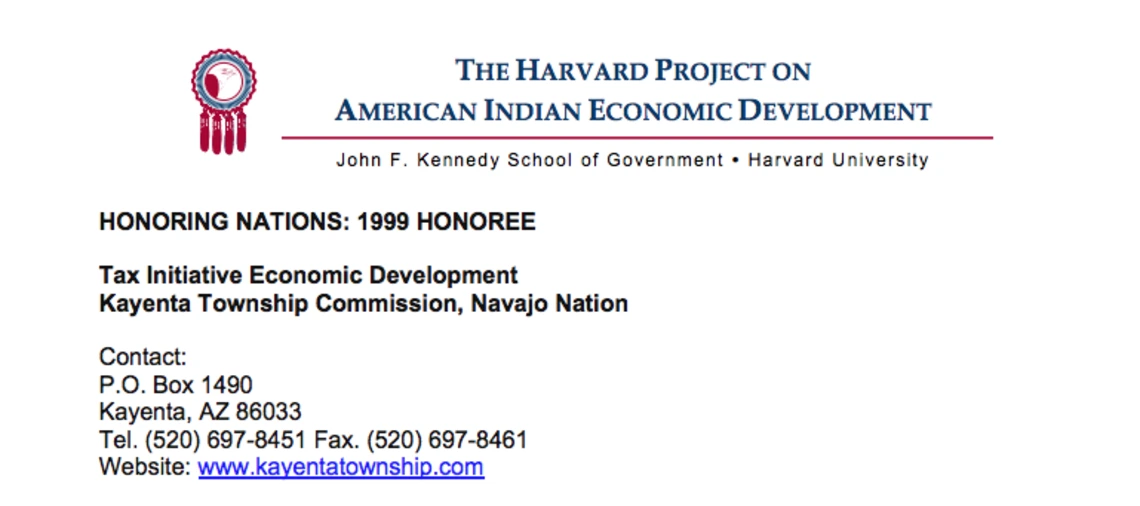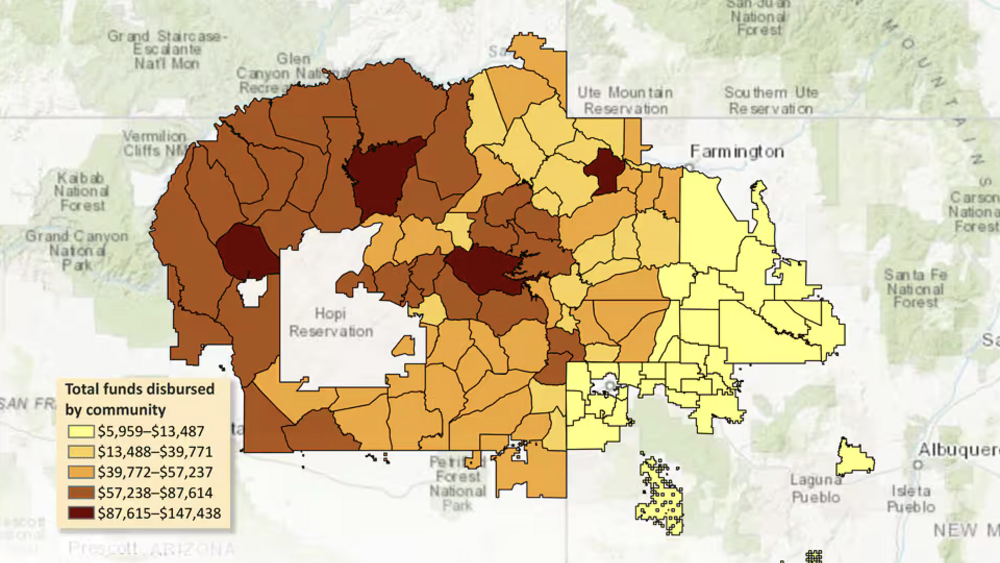In 1997, Kayenta became the first township on the Navajo Nation to take advantage of new opportunities for local governmental authority by implementing a 2.5% retail tax that brings in hundreds of thousands of dollars annually. This revenue has enabled the Township to build a solid waste transfer station, obtain leveraged financing for economic development projects, and support a local government office that oversees business and homesite leases and creates local laws and ordinances. As the only self-sufficient "township" located on an Indian reservation in the United States, the Kayenta Township demonstrates how local empowerment and governance can foster self-determined, self-sustaining economic development that addresses community-specific needs.
Additional Information
"Tax Initiative Economic Development". Honoring Nations: 1999 Honoree. Harvard Project on American Indian Economic Development, John F. Kennedy School of Government, Harvard University. Cambridge, Massachusetts. 2000. Report.



